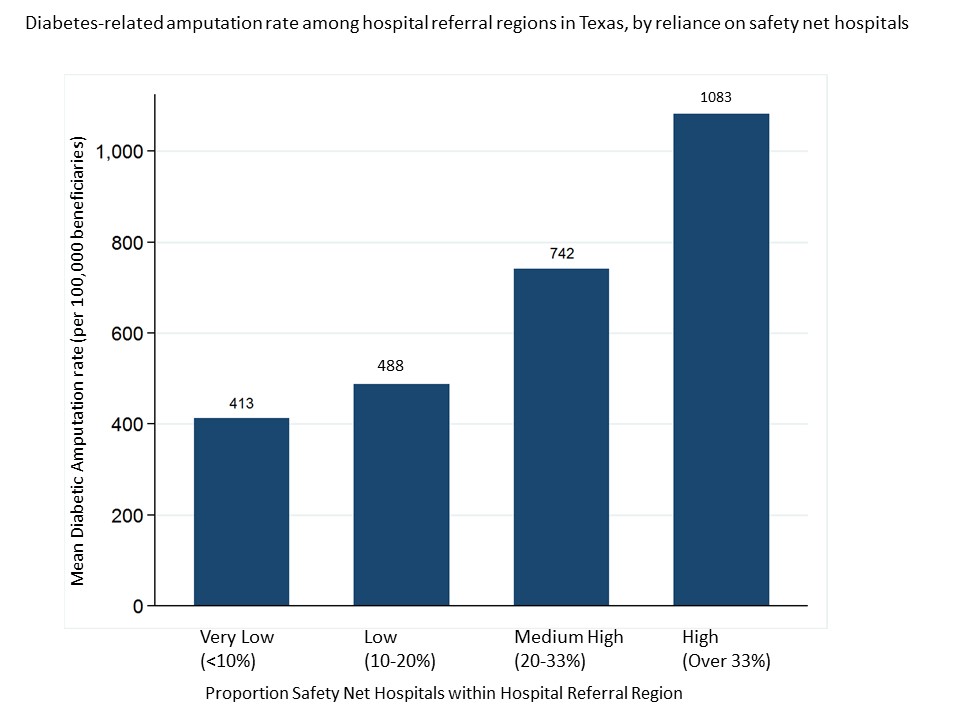Back to 2016 Annual Symposium Abstacts
Unintended consequences of bundled payments in surgery: Disproportionate burden of diabetic amputations among safety net hospitals in Texas
Karina A. Newhall, MD, Philip P. Goodney, MD, MS.
White River Junction Veterans Hospital, White River Junction, VT, USA.
OBJECTIVES:
Bundled payments have been proposed for diabetes-related lower limb amputations. Along with payment restructuring, Medicare plans to reduce disproportionate share payments to hospitals-a mechanism by which hospitals recoup uncompensated costs. If safety-net hospitals perform more limb amputations than other hospitals, they will bear a larger share of these payment reductions than non-safety-net hospitals. We sought to quantify the proportion of diabetic amputations performed by safety-net hospitals.
METHODS:
Using publicly available data from Medicare and the Texas Department of Health, we quantified the proportion of all hospitals which are safety-net hospitals within each of the 22 hospital referral regions in Texas from 2008-2012. We categorized regions by the proportion of all hospitals that are safety-net hospitals (very low (0-9%), low (10-20%), medium high (20-33%), and high (over 33%)). We then compared regional rates of lower limb amputation for diabetes across levels of safety-net hospital use.
RESULTS:
Of the 321 hospitals in Texas, 51 hospitals were identified as safety-nets (16%). Regions varied in the proportion of safety net hospitals (0% in Victoria, TX, to 65% in Harlingen, TX). Overall, the mean rate of diabetes-related lower extremity amputations in Texas was 712/100,000 beneficiaries, and varied from 413/100,000 in Victoria, TX to 1394/100,000 in Harlingen, TX. Amputation rates were directly related to the proportion of safety-net hospitals in each region (Figure, p=0.007). For example, in very low safety-net hospital regions, fewer than 420 amputations per 100,000 were performed. However, in high safety-net hospital regions, amputation rates were over two times higher (1083 per 100,000 beneficaries).
CONCLUSIONS:
Regions with a high proportion of safety net hospitals, which comprise only 16% of all hospitals in Texas, perform almost half of diabetic amputations in the state. Changes limiting disproportional share payments will incur the greatest financial penalties on the regions where the most high-risk patients receive care.

Back to 2016 Annual Symposium Abstacts
|







